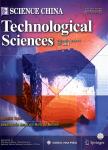“Cut-and-paste” method for the rapid prototyping of soft electronics
“Cut-and-paste” method for the rapid prototyping of soft electronics作者机构:Department of Electrical and Computer Engineering the University of Texas at Austin Center for Mechanics of Solids Structures and Materials Department of Aerospace Engineering and Engineering Mechanicsthe University of Texas at Austin Stretch Med Inc. Department of Biomedical Engineering the University of Texas at Austin Texas Materials Institute the University of Texas at Austin
出 版 物:《Science China(Technological Sciences)》 (中国科学(技术科学英文版))
年 卷 期:2019年第62卷第2期
页 面:199-208页
核心收录:
学科分类:0810[工学-信息与通信工程] 080901[工学-物理电子学] 0809[工学-电子科学与技术(可授工学、理学学位)] 08[工学] 0805[工学-材料科学与工程(可授工学、理学学位)] 0702[理学-物理学] 0812[工学-计算机科学与技术(可授工学、理学学位)]
基 金:supported by the US National Institute of Biomedical Imaging and Bioengineering(NIBIB)of the National Institutes of Health(NIH)(Grant No.R01EB021935) support from NextFlex(Project:Flexible Skin Sensing to Control a Soft Robotic Knee Exoskeleton)
主 题:cut-and-paste subtractive manufacture epidermal electronics electronic tattoos 2D materials
摘 要:Unlike wafer-based rigid electronics, soft electronics have many unique advantages including thinness, flexibility, stretchability,conformability, lightweight, large area, as well as low cost. As a result, they have demonstrated many emerging capabilities in healthcare devices, soft robotics, and human-machine interface. Instead of conventional microfabrication, there is an evergrowing interest in the freeform or digital manufacture of soft electronics. This review provides a survey for a cost-and timeeffective subtractive manufacturing process called the cut-and-paste method. It employs a mechanical cutter plotter to form patterns on various electronically functional membranes such as sheets of metals, functional polymers, and even two-dimensional(2D) materials, supported by a temporary tape. The patterned membranes can then be pasted on soft substrates such as medical tapes or even human skin. This process is completely dry and desktop. It does not involve any rigid wafers and is hence capable of making large-area electronics. The process can be repeated to integrate multiple materials on a single *** circuits(ICs) and rigid components can be added through a cut-solder-paste process. Multilayer devices can also be fabricated through lamination. We therefore advocate that the cut-and-paste method is a very versatile approach for the rapid prototyping of soft electronics for various applications.



